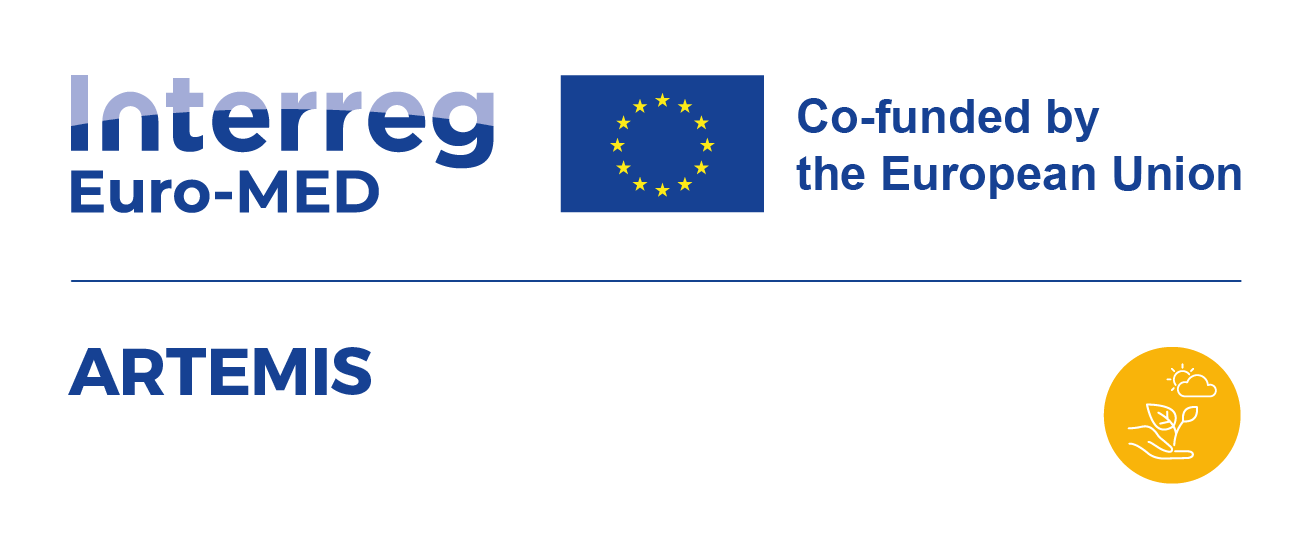Seagrass meadows cover 30 million hectares of seabed and account for nearly 18% of the carbon stored by the world’s seas and oceans. In the Mediterranean, they provide environmental services that benefit us all. Let’s find out how we can protect and restore them!
Seagrass meadows: what are they?
Seagrass meadows are marine plants that form colonies resembling underwater forests.
An endemic Mediterranean species, Posidonia oceanica, are found in warm, highly saline, and relatively clear waters at depths of up to 30 to 40 meters. They are one of the most important ecosystems on the Mediterranean coast.

Seagrass meadows cover an estimated area of 2 million hectares in the Mediterranean, including 1.2 million in the coastal areas of the countries participating in the Interreg Euro-MED Program. They play a major role in the functioning of the coastal ecosystem:
- They are used by many species for feeding, shelter, reproduction, and rearing juveniles.
- Their vegetation cover helps reduce wave force and stabilizes sandy seabeds, protecting coasts and shoreline equilibrium.
- They produce oxygen and store significant amounts of carbon.
According to a recent study (2025), the services provided by Mediterranean seagrass meadows are valued at $11.6 billion per year, with an average of $8,712 per hectare per year.
How is this possible?
- On the one hand, their coastal protection reduces natural risks and promotes tourism.
- On the other hand, their role as a refuge for biodiversity allows species to feed and develop away from predators, which benefits fishing activities in the long term.

A marine species threatened by numerous anthropogenic pressures
Despite all these benefits, seagrass meadows are in grave danger. The NGO WWF estimates that their surface area has declined by 34% over the last 50 years in the Mediterranean, with an even greater decline near urbanized areas or areas with heavy recreational boat traffic.
The causes of the destruction of seagrass meadows are as follows:
- Coastal developments (ports, dykes, artificial beaches) cover habitats or alter marine conditions: reduced light, more turbid waters, changes in sediment movement, pollution.
- Illegal fishing activities scrape the seabed, tear up Posidonia leaves, alter the seabed and make the water more turbid.
- Climate change and the warming of the Mediterranean Sea are weakening Posidonia oceanica and encouraging the emergence of more invasive species.
- Recreational boating can damage the seagrass beds when boats anchor. This is currently considered to be the most significant pressure on seagrass meadows in the northern Mediterranean countries.
What can I do as a citizen to protect Posidonia oceanica?
Despite growing awareness among authorities, businesses, and the public, seagrass meadows are still at risk of shrinking in the coming years.
Here are some best practices to adopt this summer:
✅Never drop anchor on seagrass meadows under any circumstances.
✅Find out about the nature of the seabed before and during your boat trip; apps such as Donia are available.
✅Respect no-anchoring zones and marine protected areas.
✅Choose preferred anchorage areas when these are defined by the authorities.
✅Do not damage the “Posidonia banks” on beaches.
The Interreg Euro-MED Programme promotes marine biodiversity
The ARTEMIS project, co-financed by the European Union as part of the Interreg Euro-MED Programme, is dedicated to restoring seagrass meadows.
Its actions take place in marine areas located in Spain (Balearic Islands), Greece (Crete), and Italy (Sardinia and the Adriatic coast).
These transnational active restoration pilot projects aim to transplant Posidonia oceanica in degraded areas, strengthen its presence in protected areas, and put protection measures in place. ARTEMIS also places ecosystem value at the heart of its approach by estimating the economic and social benefits of this restoration. Finally, the project develops strategies to engage local stakeholders in order to unlock new sources of funding, particularly from the private sector and businesses.
In concrete terms, this project produces:
- A map identifying areas suitable for seagrass restoration.
- Good technical practices for underwater ecological restoration operations.
- A method for quantifying the economic value of their ecosystem benefits and establishing a system of payments for ecosystem services.

Find out more on the ARTEMIS project website
Other projects supported by the Interreg Euro-MED Programme are actively involved in the management of marine protected areas. These include:

By building the skills and disseminating best practices, the project works to ensure that climate change adaptation is better taken into account in marine protected areas (MPA) strategies and actions. The project has led to the creation of the 100MPA MedAlliance initiative, which brings together a vast network of MPA managers.

The project supports marine protected area (MPA) managers in applying the IUCN Green List international standard, which recognizes sites with exemplary management and practices. It also helps them analyze the impact of their actions on biodiversity conservation.

The project facilitates the definition and implementation of coastal strategies by actors from seven local authorities, focusing in particular on the preservation and restoration of coastal habitats and ecosystems.
More about seagrass meadows
Sources and reference material
Meta-analysis and mapping of the monetary value of Mediterranean seagrass ecosystem services, Ecosystem Services, vol.72, 2025. Access the article
Posidonia – The Amazon forest of the Mediterranean Sea, WWF Mediterranean Marine Initiative Access the website


